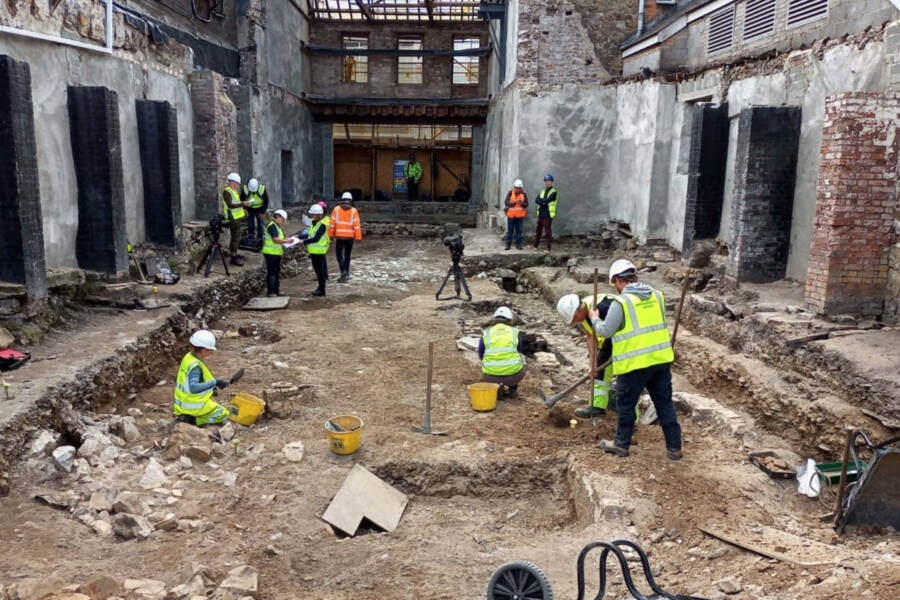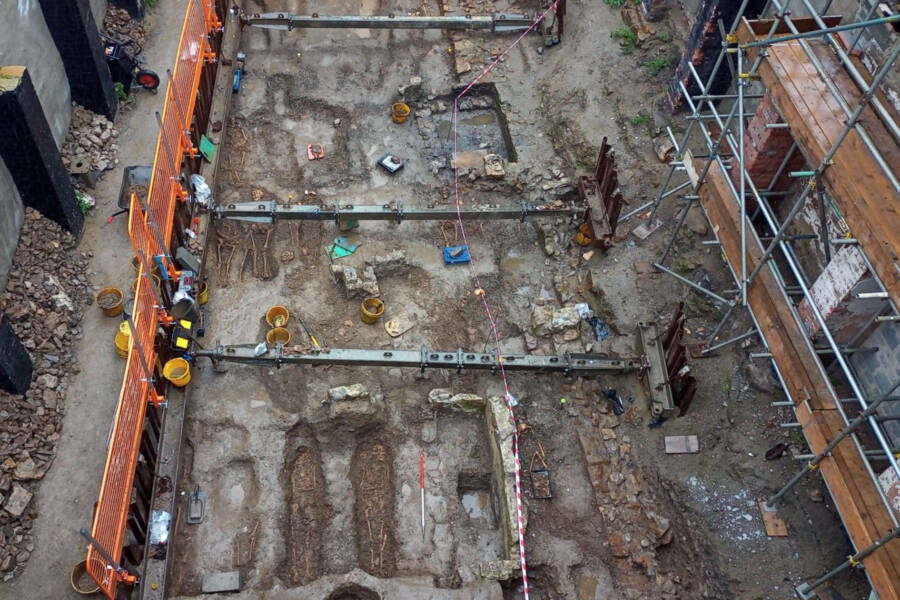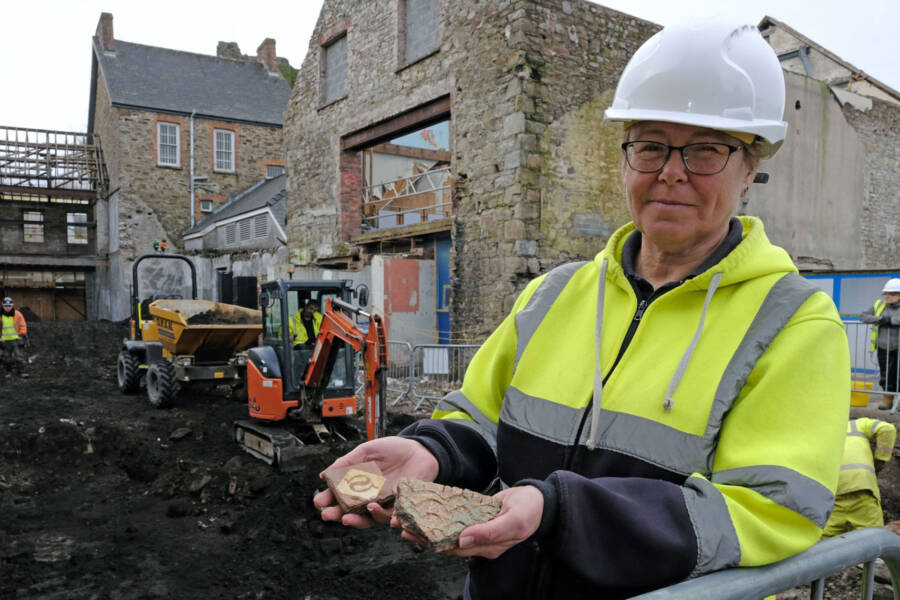The researchers believe that this site in Haverfordwest, Pembrokeshire may have once been the lost medieval friary of St. Saviour's.

Dyfed Archaeological TrustIt is rare that discoveries of this magnitude occur in urban areas, the team said.
A team of researchers excavating the site of an old department store discovered several hundred human bodies buried beneath the dirt, possibly signifying that the site was once a friary during the Middle Ages.
As Smithsonian Magazine reports, the discovery came as part of a $7.1 million redevelopment project of the Ocky White department store, which closed in 2013. The project is being headed by a team from the Dyfed Archaeological Trust.
Fran Murphy, head of Field Services with the Trust, told Sky News that the discovery is “incredibly significant.”
“Very rarely are there deep excavations in urban areas,” Murphy said. “The study of it will be such an amazing insight into society at the time. It’s a little bit overwhelming at times when you see the sheer number of excavated bones!”
In total, the team has found around 280 individual skeletons, some of which were only tiny babies. They believe the site was once St. Saviour’s Friary, which was founded in 1256.
“It is a mass of burials of people of all ages and genders — people wanted to be buried there who lived in the town,” Murphy told Sky News. “From tiny babies, you can imagine the mortality rate was very high in that period, so there are large numbers of infant burials… Most of the burials are in shrouds rather than coffins.”

Dyfed Archaeological TrustResearchers dated most bodies between the 13th and 16th centuries.
According to Smithsonian, the discovery was made when the Ocky White was demolished, leading the Pembrokeshire County Council to put the redevelopment on hold while the archaeological dig is underway.
“Historical and cultural artifacts are a part of our Welsh heritage and have an inherent value for education, research, leisure, tourism and the economy,” Terry Edwards, managing director for John Weaver Contractors, the company working on the project, said in a statement earlier this year. “We have a responsibility to mitigate the potentially damaging effects of any development we work upon.”
In addition to the human remains, the team has recovered numerous artifacts, including segments of roof ridge tile, carved stone, and decorative floor tiles — all of which add further credence to the team’s evaluation that the site was where St. Saviour’s Friary stood.
“We know it’s there because of a series of monastic references, mainly records about money,” Murphy told the Western Telegraph.
For centuries, the exact location of St. Saviour’s Friary remained unknown.
“At its height there were apparently eight friars who were part of the friary before it was dissolved and [passed] into private hands,” Murphy added. “It was dissolved in the 1530s with one of the friars scrubbing his name from the list of friars at the priory, which is peculiar and might have been a protest to it closing.”

Pembrokeshire County CouncilFran Murphy holding tiles recovered from the potential site of St. Saviour’s Friary in Pembrokeshire, Haverfordwest.
Site supervisor Andrew Shobbrook told the BBC that the site was “quite a prestigious place to be buried.”
“You have a range of people, from the wealthy to general townsfolk,” he said.
Shobbrook described the friary as a large complex of buildings, including dormitories, scriptoriums, stables, a hospital, and, of course, a graveyard.
Some of the recovered remains also showed signs of physical trauma, with a portion having sustained head injuries consistent with those received during battle.
“We know that the town was besieged in 1405 by Owain Glyndŵr, and they could be victims of that conflict,” Shobbrook told the BBC.
For now, however, it is too early to say. In the meantime, the remains have been taken to a nearby site for expert analysis, after which they will be reburied on consecrated ground. The site itself will see significant change in the near future as well, as it is turned into a three-story food emporium with a bar and rooftop terrace.

Pembrokeshire County CouncilSome members of the team from Dyfed Archaeological Trust at the site of the former Ocky White.
“People just stop as they’re shopping and look in the window for the new things that we’ve found,” Murphy told ITV. “There’s all this accumulated history of their own town beneath them. It’s so gratifying for me and the staff for people to stop us every day and ask questions… It’s a little bit out of our comfort zone.”
“Never in my wildest dreams did I think I would [be] involved in something so big,” archaeologist Gaby Lester told BBC. “The site is showing itself to be a massive part of the history of Haverfordwest and Pembrokeshire. It can be slightly overwhelming at times but it’s also quite humbling to be part of that journey.”
Surprisingly, this isn’t the first time ancient remains were found in a department store. Read about the mummified monkey that was discovered in the seventh-floor ceiling of a Minneapolis department store. Then, learn about Roopkund Lake in India, where hundreds of human skeletons mysteriously washed ashore.





